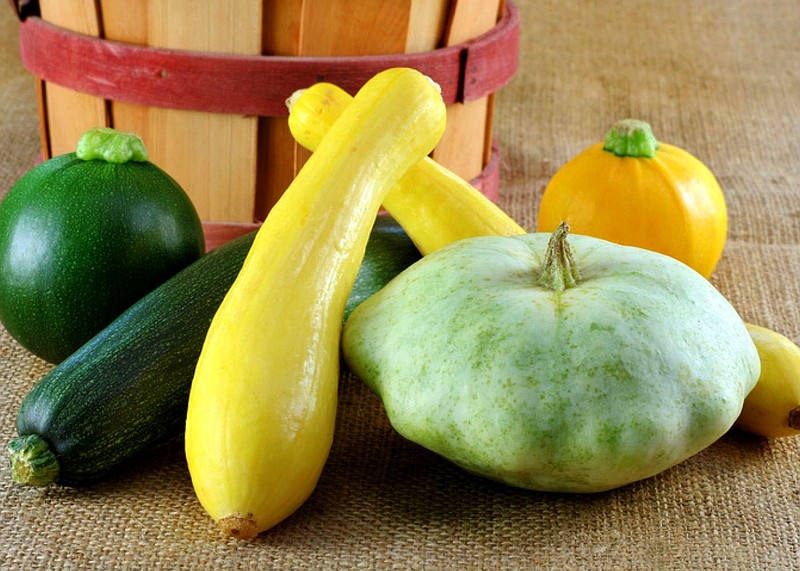Eating fruits and vegetables is very important to heart health. Why not enjoy some summer squash, which is plentiful this time of year? There are three common types of summer squash -- the straight-neck or crooked neck variety, the green zucchini squash and the white saucer-shaped, scallop or pattypan squash.
Yellow squash is low in calories, is an excellent source of vitamin A and a good source of vitamin C, and it provides needed potassium, magnesium and fiber to the diet, according to Easter H. Tucker, interim family and consumer sciences program leader for the University of Arkansas at Pine Bluff. Squash is one of the many members of the cucurbit family, which includes other common vegetables such as cucumbers, melons and gourds.
They are generally divided into two groups, summer and winter squash, which designate when they are harvested, Tucker said. Summer squash is harvested before the rind hardens and the fruit matures. It is grown throughout Arkansas during the frost-free season.
Squash is one of the most rapid-growing plants in the garden, Leonard Perry, Extension professor, University of Vermont, said. Summer squash needs warm weather for best growth.
"Plant two or three squash plants in your garden, and in approximately 50 to 65 days, you are ready to harvest," he said. "You want to harvest them before they are fully matured for best flavor and texture. The seeds should not be fully matured, and you should be able to scrape the skin easily with your fingernail. The skin should be free of blemishes and have a vibrant color."
Once the squash has been harvested, it can be stored for a few days in the refrigerator, Tucker said.
"There are many ways to enjoy fresh summer squash," she said. "Try it fresh in salads, stir-fried, grilled, sautéed, steamed, as dippers for your favorite salad dressing or grated and used for breads. Squash can be canned as pickles or relishes or frozen. It can also be used in vegetable medleys with tomatoes and onions."
Frozen squash does not have the best quality but could be used in combination dishes such as casseroles., Tucker said. To freeze squash, wash it after harvesting and slice it. Blanch it in boiling water for three minutes to kill enzymes and bacteria that can break down the squash. The squash should be cooled rapidly in running cold water or an ice water bath. It should then be strained and placed in freezer bags or vacuum-sealed.
"Remember, summer squash is a low calorie, nutritious food," she said. "Discover new ways to prepare it."

